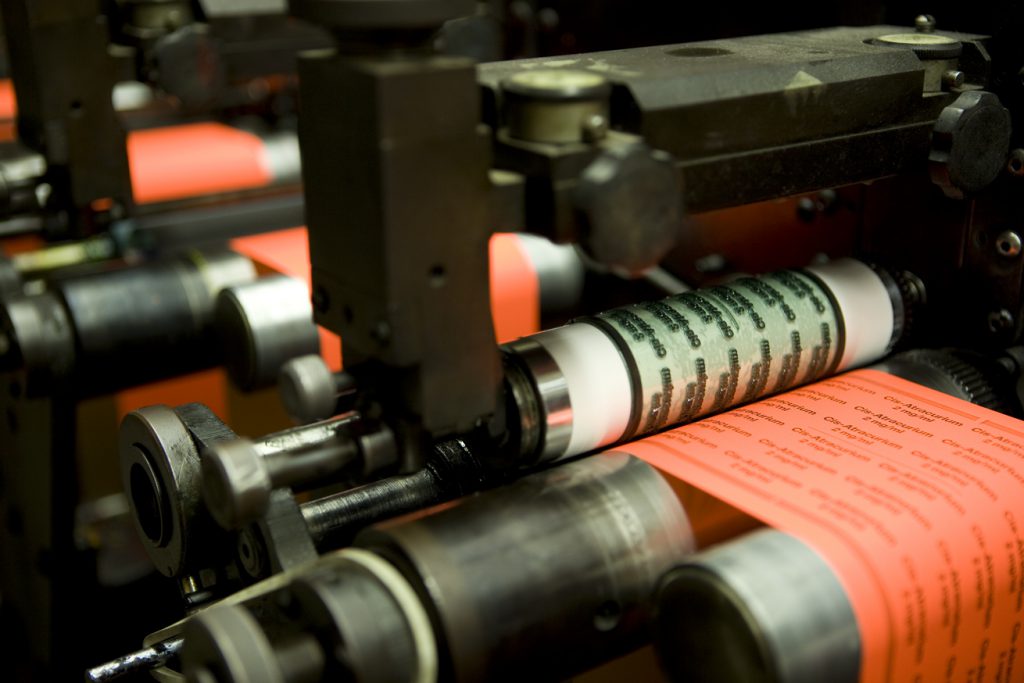Flexographic printing applications have revolutionized the printing industry with their adaptable and efficient nature. This versatile printing technique caters to a wide array of products, making it an essential component in various sectors. As we delve into the world of flexographic printing, it is crucial to understand its applications, benefits, and evolving trends.
Being at the heart of multiple industries, flexographic printing is designed to print on diverse substrates, from paper to metallic films. Its capabilities extend beyond traditional printing, offering innovative solutions for businesses seeking high-quality and eco-friendly outputs.

What is Flexographic Printing?
Before exploring its applications, let’s understand what flexographic printing entails. Flexography, often referred to as flexo, is a form of printing using flexible relief plates. This process is ideal for producing consistent, high-volume prints quickly and effectively.
The Core Mechanism of Flexography
This printing method utilizes a rotary system that involves flexible plates wrapped around cylinders. The plates are inked, rotating to transfer ink onto the desired substrate. Its simplicity in design allows for a seamless and rapid printing process.
Advantages of Flexographic Printing
The appeal of flexographic printing lies in its efficiency and cost-effectiveness. Its ability to use fast-drying inks contributes to the quick turnaround of print jobs. Moreover, flexo printing is known for its ability to print on a plethora of substrates, from corrugated cardboard to flexible films.
Cost-Effectiveness and Speed
One of the standout benefits is its economic advantage, saving both time and materials, which is ideal for large-scale production.
Eco-Friendly Benefits
Utilizing water-based inks, flexographic printing reduces the environmental impact, aligning with sustainability goals.
Diverse Applications of Flexographic Printing
The scope of flexographic printing applications is extensive. From producing labels and packaging to printing newspapers and wallpapers, flexography serves numerous industries efficiently.
Packaging Industry
In packaging, it is predominant for its ability to handle various materials like plastic, foil, and cardboard. Flexography enables vibrant and durable prints essential for consumer goods packaging.
The insights you gain from choosing specialized finishes can significantly enhance product aesthetics. Learn more about brochure finishes, which share similarities in choices available to flexographic prints.
Label Production
Beyond boxes, flexographic printing excels in label production. Its efficiency allows businesses to produce colorful and dynamic labels quickly.
Corrugated Board Printing
The flexibility of the printing plates ensures high-quality prints on corrugated boards, suitable for shipping and storage purposes.
Technological Innovations in Flexographic Printing
As industries lean towards digitization, flexographic printing has adapted by incorporating innovative technologies to enhance print quality and production efficiency.
Advanced Plate Technology
New developments in plate technology allow for finer detail and higher precision in prints.
Enhancing Ink Capabilities
As technology progresses, the range of inks available for flexo printing expands, offering varied colors and properties.
Utilizing the right type of ink is crucial. Check out this resource on ink types for further insights into optimizing your printing quality.
Challenges and Considerations
While flexographic printing boasts numerous advantages, understanding potential challenges is essential for successful implementation.
Initial Setup Costs
Investing in equipment involves significant initial costs, which might be a consideration for smaller businesses.
Training Requirements
Skilled operators are required to manage the machinery efficiently, necessitating training programs for staff.
The Future of Flexographic Printing
The future of flexographic printing is promising, with continuous advancements in technology and growing demands for sustainable and high-quality print solutions.
Integration with Digital Printing
The hybridization of flexo and digital printing methods is anticipated to expand the possibilities within print production.
Sustainability Trends
As industries prioritize eco-friendly practices, flexographic printing remains a vital part of sustainable production strategies.
Conclusion: Embracing Flexographic Printing in Business
For any company willing to meet dynamic market needs while embracing sustainable practices, investing in flexographic printing applications can prove rewarding. With its flexibility, speed, and adaptability, flexographic printing is not just a printing solution but a driver of business innovation.
By integrating these practices into your business operations, you’re not only enhancing your product’s presentation but also contributing to a broader commitment to sustainable development.
Explore how you can bring these advantages to your company through expert insights found in professional services such as professional brochure printing that shares common principles and techniques with flexography printing.

FAQ Section
What products can be made using flexographic printing?
Flexographic printing is widely used for creating packaging, labels, flexible plastics, corrugated containers, and even wallpapers. Its versatility allows for printing on an array of materials, broadening the range of products it can produce.
How can flexographic printing be eco-friendly?
Utilizing water-based inks, which are less harmful to the environment than solvent-based inks, makes flexographic printing more sustainable. The rapid drying nature of these inks reduces overall energy consumption, making it an environmentally preferred choice.
Why is flexographic printing favored in the packaging industry?
Flexographic printing is favored in the packaging sector due to its capability to produce high-quality, vibrant designs on various substrates efficiently and economically, making it ideal for large-scale manufacturing processes.






